Geology 01 - Origin of the Universe
Geology is around us every day. Most people do not think about it, it's just there.
The purpose of these posts will not be to remember names or dates, but to gain a general understanding of geology in general, and perhaps raise an additional interest for geology for some people.
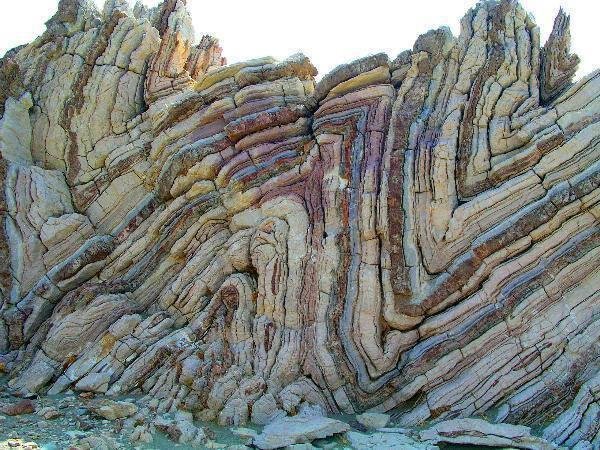
(Source: photo found on Google - https://twitter.com/JaviCarmona80)
It hardly goes a day where i am not thinking about geology.
Driving from a to b on a daily basis is usually a geological experience for me. And as a collector of crystals and minerals, it often become a small treasure hunt as well.
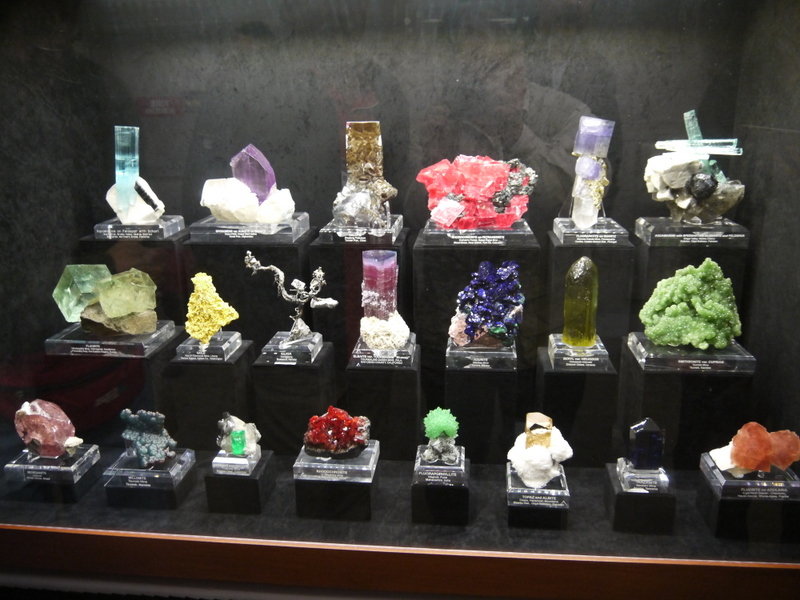
(Source: https://www.pinterest.com/pin/508343876666676814/)
And, of course, it gives a lot of nice natural experiences as a positive side effect.
With the knowledge of geology, you will always have an extra aspect of traveling that gives you both an additional understanding of why the country is as it is,
and it can make a place that may be boring for most people, to be an adventure for you. :)
My plan is to make many posts about geology, but to understand other things later, it is necessary to begin with the beginning.
So lets start with the very beginning.
The origin of the Universe:
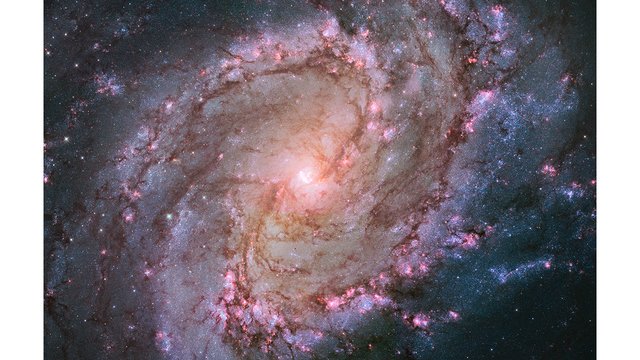
Spiral Galaxy M83 - (Source Hubble telescope - http://hubblesite.org/image/3293/gallery)
How it all started depends a little on who you ask, it's theories after all.
our main theory started with a Belgian astronomer named Georges Lemaitre (1894-1966)
He believed that all that exists in the universe today was once assembled in a small area about the size of a tennis ball. (Under such circumstances, even atoms are demolished and torn apart.)
So what was it in this area then?
The answer is quarks.
What is a quark? A quark is the smallest of all matter.
The protons and neutrons that form an atom are made of quarks.
Some believe that the very first so-called "primeval atom" was a collection of quarks.
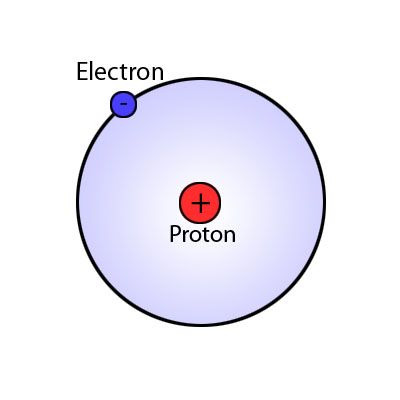
(Hydrogen atom)
Another theory is based on something we call a singularity.
What is a singularity?
It can best be described as a "non-dimensional place / dot"
What is that? Nothing. It's not material after all.
Only energy, pure energy.
The most accepted theory is The big bang theory.
But what really triggered The big bang?
Again, it depends on who you ask.
The supporters of the primeval atom theory believe that it started with an explosion.
The singularity theorists believe that it just began to expand rapidly.
(my personal theory, is a bit of those theories, the string theory and a little more, but i will stick to the most accepted theories now, it will take a book to explain my own personal theory, but if i am lucky and get both time and resources to do it, i will write it.) ;)
Let's take a look at the primeval atom theory.
In this picture there is an explosion of quarks spread out quickly in all directions.
There are 6 different types of quarks.
(They do not have so very orginal names)
It is:
.Up
.Down
.Charm
.Strange
.Top
.Bottom
Up and Down quarks are the ones that will be most important to us in this, as they are the ones that form the basis for creating an atom, namely protons and neutrons.
Proton: 2 up quarks and 1 down quark.
Neutron: 2 down quarks and 1 up quark.
The electrons are not particles but energy.
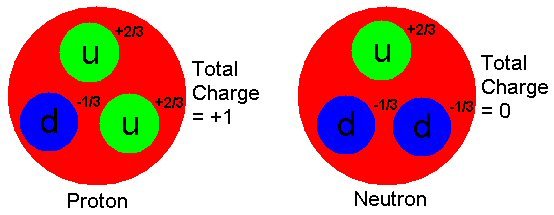
(Up and down quarks form protons and neutrons)
We now have the foundation of the simplest of all atoms, namely hydrogen that consists only of a proton and an electron.
Protons were made, and from the protons the energy to create electrons was formed.

(Hydrogen atom) (Electrones actually does not go around the atom centre like a moon, but showing it like this make it understandable for most people)
But what about the singularity theory?
Matter had to be created after all for the rest to be created.
According to Albert Einstein's theory of energy (E = mc2), energy can be transformed into matter.
And in that way, singularities could form quarks.
In both cases we now have quarks that have formed hydrogen atoms.
These again begin to clump together, which in turn forms gravitational power.
(According to Isac Newton, an object in the room that gets a curved route / direction will create gravity)
In the end, so many had gathered that this began to create a huge heat.
(Pressure create friction, and friction create heat)
This again created the possibilities for conversion to helium.
You can not get rid of mass, but you can transform it.
And with all the extra electrons this fusion created, then the energy was transformed into other things and we had our first stars.
That's how it is estimated that stars are formed in a cloud of expanding hydrogen gas.

(Sourse: Wikipedia image - https://en.wikipedia.org/wiki/Star)
In the end, we had so many stars that they again began to attract each other.
Isaac Newton's Law that everything in the universe attracts everything else in the universe comes in here.
With this we have got our first galaxy.
As the stars spin towards each other, this forms a pattern where the entire galaxy eventually turns into a spiral movement.
And therefore, they usually also are flat almost like a discos.
This is because something we can call slurry effect.
We see the same effect on the earth, where it is widest at the outer edge of its own axis, while from bottom to top it is flatter.
Fortunately for astronomers we find ourselves on the outer edge of our galaxy, the Milky way.
This makes it easier for us to discover the rest of the universe around us.
If we were in the middle, all the stars would prevent us from this in the same way that the trees in a forest would prevent the view there.
In my next post about geology, i will talk a little bit about stars and galaxies.
(Relax, in my 3 or at least 4 post about geology, we will have come to earth and the geology here.. ;)
(Since i am very interested in this, i get a bit carried away, but i hope the post was not to long, i shall try to make the posts as small but informative as possible, but at the same time there is certain things that must be in the same post for it to make sense..)
I hope you have a good day when you read this. :)
All my geology posts are also very much based on and inspired by
the lectures of John J. Renton, professor of geology. https://en.wikipedia.org/wiki/John_Renton
Nice post...post have suitable words thats why every steemians understand easily this topic...thanks for sharing with us such as informative post... @rezpatex
Thank you, i try to make it as interesting as possible. :)
Thanks for sharing
Trying to delete commercial i no longer support and that does not work as they first promised.
I am talking about this Originalworks.
The @OriginalWorks bot has determined this post by @rezpatex to be original material and upvoted it!
To call @OriginalWorks, simply reply to any post with @originalworks or !originalworks in your message!
To enter this post into the daily RESTEEM contest, upvote this comment! The user with the most upvotes on their @OriginalWorks comment will win!
For more information, Click Here! || Click here to participate in the @OriginalWorks writing contest!
Special thanks to @reggaemuffin for being a supporter! Vote him as a witness to help make Steemit a better place!
nice one there